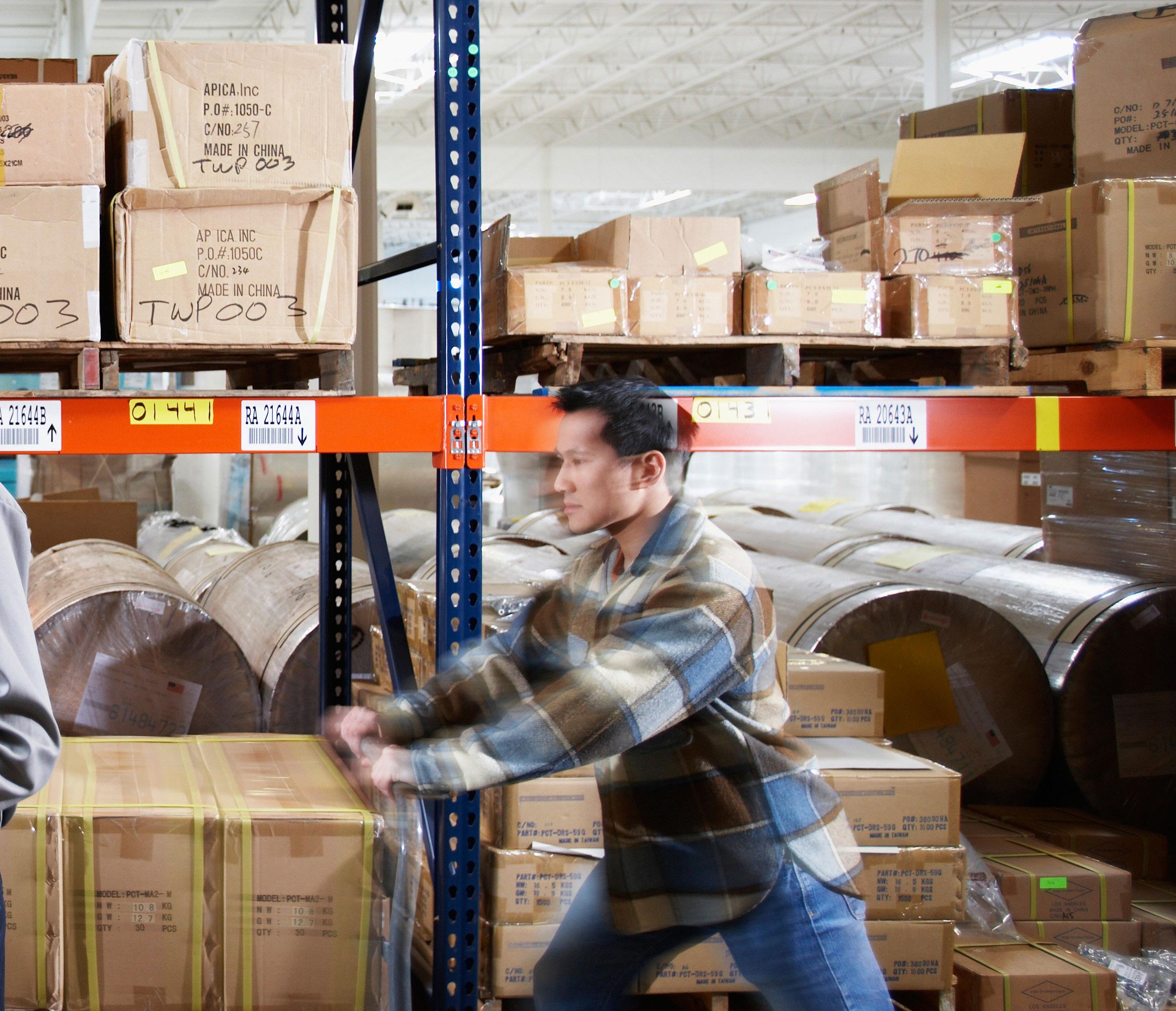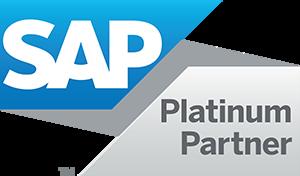The Future of Sustainable Supply Chains






his was seen in the form of offshoring manufacturing to low-cost regions, identifying lowest cost suppliers, initiating just-in-time strategies, and more. And then the world changed. The global pandemic, lockdowns, natural disasters, and wars have made companies realise just how vulnerable supply chains have become due to risk and disruptions. Now, supply chain management is about how to balance cost and efficiency whilst alleviating that risk and incorporating sustainability and just-in-case strategies.
According to SAP, we need to rethink how we build supply chains to design risk right out of them whilst embedding sustainability into them. Caroline Cioe, Vice President of Sales, Digital Supply Chain, at SAP North
America, explains, “Disruption causes an imbalance in the system, so we are now pushing to get more balance in the supply chain. Technology can help, especially in connecting the networks together. If you are doing things manually, it is really difficult to connect the extended supply chains. Technology is the only way to get visibility deep into the supply chain.”
So, how can organisations capitalise on intelligent technologies to make them smarter and more profitable?
Caroline answers, “As the cost of IOT-enabled sensors has come down, we are seeing more and more smart products and assets across the supply chain. This has enabled access to an unparalleled amount of information about how the supply chain is performing. There is a huge
For decades, supply chains were considered a cost centre, and managing them focused on minimising costs and maximising efficiency.

opportunity to leverage machine learning (ML) and artificial intelligence (AI) to take this IOT-based data from people, devices, assets, products, and vehicles across the supply chain to automate decisions and processes.
“Meanwhile, predictive analytics empower employees to make more informed, real-time decisions, and drive new business models. Technology is also helping alleviate worker shortages and improve retention by improving the
productivity and decision making of existing employees, and attracting new talent with state-of-the-art tools.”
In the past, predictions were made based on historical facts. Today, we can use other types of information to understand what is coming. For example, we can look at correlations between outside factors such as economic indicators, events in the commercial real estate world, as well as political events, and use the

technology to better predict what is going to happen in the future.
Caroline believes that predictive analytics are key to any supply chain strategy in the modern day. Other key enablers include probabilistic planning, optimisation, visibility and collaboration. Caroline continues, “Having a platform that connects to other suppliers, contract manufacturers, logistics service providers and trading partners outside the four walls of

“Humans and machines can collaborate effectively together. Where we can automate, we should do so, but you still need the intelligence of people to make it work”
Caroline Cioe, Vice President of Sales, Digital Supply Chain






your organisation creates a control tower environment, allowing you to see deeper into your supply chain. Being able to use all the available data to make decisions is a huge advantage. It is critical to expand this visibility and collaboration across the multi-tiered supply chain, from raw materials supplier to the end customer.”
From smart factories featuring 5G, greater connectivity and enhanced

“If we are able to predict when something could go wrong, businesses can benefit from finding a resolution quicker and more efficiently”
AI solutions, to smart products and assets across the supply chain, Industry 4.0 has a lot to offer companies that have invested in these technologies. Caroline says, “We have seen companies using Industry 4.0 within their factories, and are increasingly seeing this expand across the supply chain of smart assets, and into the hands of consumers and customers leveraging the smart products and devices it enables. When you
have an asset that sits deep into the supply chain, you are able to capture the data in real time and get the data to the c-level suite to make a decision. This helps decision makers to make better decisions faster. If we are able to predict when something could go wrong, businesses can benefit from finding a resolution quicker and more efficiently.”
As the degree of automation increases, it frees up the workforce from repetitive tasks, and allows them to focus on more complex problems and decisions that require human interactions. But, will humans ultimately be replaced by machines? Caroline answers, “Humans and machines can collaborate effectively together. Where we can automate, we should do so, but you still need the intelligence of people to make it work. I would rather see humans than machines making strategic decisions. In many environments, you can let the automation run for 80 per cent, and then the remaining 20 per cent is where the human element should step in.”
SAP’s approach is to build an ecosystem of trusted partners to enable its customers to get the value as quickly as possible. Caroline explains, “A lot of SAP solutions provide an industry template, but there are certain

things that make a company unique, so our partners use technology to tailor the solution to make it more bespoke to that company. Trusting your partners, enabling transparency and having openness allow you to get the information you need. SAP is all about creating networks that let you share information from deep inside the supply chain. For example, when there is disruption in the supply chain, real-time information is communicated, allowing executive decisions to be made immediately.”
Caroline says there is no alternative these days but to leverage technology in order to become more agile and risk-resilient. She explains, “Technology enables organisations to gain a competitive edge. Companies using technology will leapfrog those that are not doing so. A strong ecosystem with transparency and visibility enables a company to react faster, get products out to market quicker, and solve any potential
disruptions faster than if they were to try to do it manually.”
SAP’s ecosystem of partners bring solutions that extend SAP’s functionality to create more of a holistic approach. SAP successfully partners with a range of professional service entities, from large SI’s like Accenture, Deloitte and Ernst Young, to boutique partners like Westernacher, MSCG and ArchLynk.
Speaking of future trends likely to impact supply chains everywhere, Caroline highlights sustainability as a major topic of board rooms around the world. She says, “We are now seeing that most companies have sustainability as part of their corporate strategy or mission statement, but many are still struggling when it comes to how to track, monitor and measure key performance indicators across often global and complex supply
“SAP successfully partners with a range of professional service entities, from large SI’s like Accenture, Deloitte and Ernst Young, to boutique partners like Westernacher, MSCG and ArchLynk”




A s a b o u t i q u e g l o b a l c o n s u l t i n g c o m p a n y , K r y p t o f f e r s t h e d i s t i n c t a d v a n t a g e o f s p e c i a l i s e d e x p e r t i s e e x c l u s i v e l y i n S A P G l o b a l T r a d e a n d S u p p l y C h a i n S o l u t i o n s W e o f f e r o u r c u s t o m e r s f l e x i b i l i t y a n d i n n o v a t i o n i n a d d i t i o n t o s t a n d a r d , o u t o f t h e b o x s o l u t i o n s K r y p t w i l l c u s t o m i s e a s o l u t i o n t o f i t y o u r s p e c i f i c b u s i n e s s n e e d s A o n e s t o p s h o p f o r y o u r g l o b a l t r a d e a n d s u p p l y c h a i n n e e d s .
S p e c i a l i s e d E x p e r t i s e i n G l o b a l T r a d e a n d S u p p l y C h a i n C u s t o m S o l u t i o n s , I n t e g r a t i o n s , M i g r a t i o n s a n d I n t e r f a c e s B o u t i q u e C o n s u l t i n g C o m p a n y F l e x i b l e , A d a p t a b l e a n d I n n o v a t i v e L a r g e s t G l o b a l T r a d e a n d S u p p l y C h a i n P r a c t i c e W o r l d w i d e G l o b a l R e a c h w i t h E x p e r t s a n d O f f i c e s W o r l d w i d e
S A P G L O B A L T R A D E S E R V I C E S
S A P T R A N S P O R A T I O N M A N A G E M E N T S A P W A R E H O U S E M A N A G E M E N T S A P I N T E G R A T E D B U S I N E S S
P L A N N I N G S A P B U S I N E S S N E T W O R K L O G I S T I C S
K r y p t C o n c i e r g e K r y p t C l o u d K r y p t V i s i b i l i t y K r y p t C o n n e c t
LEADING GLOBAL SAP PARTNERThe leading global SAP Partner for Global Trade and Supply Chain solutions since 2008. Headquartered in San Jose, California, with offices in Canada, UK, Ireland, Netherlands, Germany, India
chains. Everyone wants to drive towards a better world and a better planet. The 2020s have been named the Decade of Action by the United Nations, which calls for the acceleration of sustainable solutions for the world’s biggest challenges – poverty, gender, climate change, inequality, and closing the finance gap. SAP’s solutions are strong on this front. I think we are going to see economic times change with

“I think we are going to see economic times change with the recession, so we need to turn to technology for additional recessionproof solutions”

Caroline adds, “Our global supply chains sit right in the middle of these challenges, both as a major contributor to the problems, and as a great area of focus, where we can take action to address the problems. End-to-end supply chain transparency is critical, both within the walls of a company (Scope 1 and 2), and across the business network of suppliers, contract manufacturers, service providers, and other trading partners (Scope 3).
Sustainability initiatives must extend from the design, to the decommission of a product, from raw materials sourcing to last-mile logistics, and even to product usage, returns and recycling processes.”

“Sustainability initiatives must extend from the design, to the decommission of a product, from raw materials sourcing to last-mile logistics, and even to product usage, returns and recycling processes”
At every stage in the lifecycle of specific products, there are social and environmental impacts on the environment and on people. As a result, governance – or accountability – is important at every stage throughout the supply chain and product lifecycle.

Caroline outlines a sustainable product lifecycle as follows,
“Firstly, it is necessary to design products that are recyclable and environmentally sustainable. This involves designing to minimise carbon footprint of both processes and products, collaborating with suppliers on sustainability issues to foster product innovation, and ensuring all packaging and products are biodegradable, reusable or recyclable.
“Sourcing materials that eliminate slave labour and ensure fair trade regulations is key to improving visibility across all tiers of your supplier network”


M S C G / / M y S u p p l y C h a i n G r o u p i s a s p e c i a l i z e d c o n s u l t i n g f i r m p r o v i d i n g a r a n g e o f s e r v i c e o f f e r i n g s w i t h i n t h e S A P S u p p l y C h a i n E x e c u t i o n a n d P l a n n i n g a p p l i c a t i o n p o r t f o l i o . O u r d e d i c a t e d e x p e r t s w o r k a l o n g s i d e o u r c u s t o m e r s t o b u i l d a r o a d m a p f o r t r a n s f o r m a t i o n i n D i g i t a l S u p p l y C h a i n . F r o m a s s e s s m e n t t o i m p l e m e n t a t i o n t o s u p p o r t , M S C G i s c o m m i t t e d t o e a c h c l i e n t ' s s u c c e s s a t e v e r y s t e p o f t h e w a y o n t h e i r j o u r n e y t o w a r d s u s t a i n a b l e s u p p l y c h a i n e x c e l l e n c e .
M S C G h a s h a d a n e x c l u s i v e f o c u s o n S A P D i g i t a l S u p p l y C h a i n s o l u t i o n s s i n c e i t s i n c e p t i o n 1 4 y e a r s a g o . W e a r e p a v i n g t h e w a y i n l e a d i n g e d g e t e c h n o l o g i e s , i n c o r p o r a t i n g a u t o n o m o u s m o b i l e r o b o t s ( A M R s ) , c o b o t s , a n d a u t o m a t i o n i n o u r p r o j e c t s t o s h o w c a s e t h e f u l l s t r e n g t h o f S A P ' s s u p p l y c h a i n s o l u t i o n s . “ M S C G h e l p s o u r c u s t o m e r s t r a n s f o r m t h e i r s u p p l y c h a i n i n t o a t r u e ' V a l u e C h a i n , ' b y t u r n i n g l o g i s t i c s i s s u e s a n d c h a l l e n g e s i n t o b u s i n e s s b e n e f i t s w i t h a c c e l e r a t e d a n d m e a s u r a b l e R O I . "
M a n a g i n g P a r t n e r , M y S u p p l y C h a i n G r o u p
We set the industry standard in supply chain execution & logistics services that drive efficiency and manage inventory and the movement of goods throughout a warehouse Our clients' ability to continuously capture data allows for agile and informed decision making.
MSCG supports SAP's supply chain planning solutions that drive top end revenue growth, improvements in service levels, and increased speed and agility of supply planning






Our team is dedicated to the success of each and every project We support our customers from assessment to implementation and beyond to ensure cohesive enablement, adoption, and systems support.
C L I C K H E R E T O S T A R T Y O U R S U P P L Y C H A I N J O U R N E Y
“The second step is to plan to reduce emissions and ethically source materials. You should aim to focus on improving demand accuracy to reduce obsolete inventory, leverage scenario planning to predict end-oflife scenarios and support circular processes, simulate the CO2 footprint of the plan through the procurement, production, and transportation processes, and report actual results against the plan to determine progress and areas of improvement.
“Sourcing materials that eliminate slave labour and ensure fair trade regulations is key to improving visibility across all tiers of your supplier network, as well as identifying and monitoring the most salient risks and gaps within your supply chain and how those may impact business resilience.
“As far as the manufacturing side is concerned, the goal is to manufacture with minimal waste and environment impact,

monitoring energy usage as a function of production volume, measuring CO2 emissions against compliance commitments, optimising manufacturing to reduce waste, and ensuring the overall safety of the workforce.
“The final point is to deliver products and services in a sustainable way, using logistics processes that optimise loads to reduce mileage and carbon footprint,using CO2 - and energy-

optimised warehousing and transportation, and developing a process to ensure the safety of workers, making sure only qualified personnel can handle dangerous goods.”
Sustainability is therefore tied into every project that SAP is running. Caroline enthuses, “It is something that is front and centre for all of us.”
As for the future, Caroline is excited about the emerging technology

trends in the supply chain space. She concludes, “There is so much happening right now around probabilistic planning, networking, leveraging AI and ML in a more efficient manner, and tying it all together with a digital thread. We need to look at synchronised planning to ensure we are using the digital twin effectively, and, of course, all of that really relies on Industry 4.0 taking us there. As we connect deep into the supply chain and make better use of the data for decisions, it

be about that quick time to action we need to be successful.”
For further information on SAP North America, visit www.sap.com
will
“As we connect deep into the supply chain and make better use of the data for decisions, it will be about that quick time to action we need to be successful”
www.sap.com